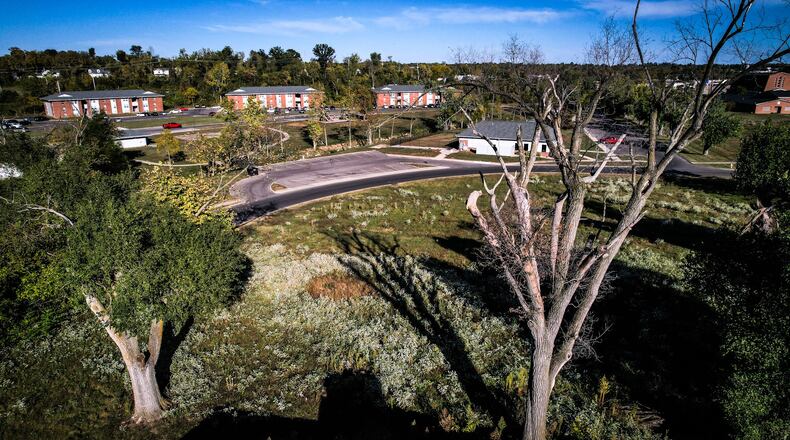“There are a lot of companies out there that are not,” said Carol Collins, Oakwood’s leisure services director.
Tree removal can range in cost from about $150 to $7,900 depending on its size and degree of difficulty of the job, according to websites. Gotreequotes.com last month said the average cost is about $1,265 and recommended at least three quotes from qualified arborists.
Additionally, it may be a long time before you get a tree removal company to come out to your house. Smaller, less established businesses may be available, but lack a track record, said Sande Heck, Centerville code enforcement officer.
“The good ones are very busy. They’re booked up (for) months,” she said.
However, working with a certified arborist or getting the right professional for the job may save you money in the long run. For example, just because a tree has defects doesn’t necessarily mean it has to come down. In many cases, a problematic tree can be managed so that it doesn’t become a hazard to people and property, said Mark Webber, who owns and operates a local landscaping business.
“As a rule in our practice, we don’t like to do removals. If we can literally talk a client out of removing a tree we will,” Webber said.
Replanting trees
Both cities and independent organizations have a variety of resources for replacing trees that do need to come down.
Oakwood removes trees on residential property at the city’s expense so long as they are between the sidewalk and curb, Collins said. Additionally, Oakwood offers residents a 50% discount on trees that are planted in the city right of way through its Johnny Appleseed street tree project, Collins said, noting that they are usually 1.75 to 2 inches at planting time.
“They’re planted by a local nursery,” she said. “They have to be locally grown because of the soil conditions that we have in this area.”
Xenia’s volunteer Tree Committee hosts an annual tree sale, offering native varieties like American Linden and Yellow Buckeye. Native trees are becoming increasingly popular because of their benefits to local wildlife, including birds and pollinating insects.
Sugarcreek Twp. resident Patrick Higgins said he no longer sprays his yard for mosquitoes. By planting native plants and trees in his yard, he has seen more birds, bats, and dragonflies — all of which eat the tiny, bloodsucking pests.
“I didn’t do anything besides stop spraying and create some habitat,” he said.
Oakwood has offered a variety of trees through the years, red oak, white oak, sugar maples and Norway maples, among them.
Those five types are all listed as most desirable on Kettering’s urban forest management plan, a study completed in April 2020. The 86-page plan is Kettering’s guide to trees the city maintains, said Gary Schussler, a certified arborist and that city’s parks superintendent.
“If you don’t know what you have, you can’t manage it,” he said. “It’s much like a budget. If you don’t know your finances, how are you going to manage your finances?”
TREE TYPES
The following are recommended tree species for public and private tree plantings.
Most desirable
•Larger*: Scarlet oak, river birch, black cherry, autumn gold ginkgo, American linden, littleleaf linden, Norway maple, sugar maple, red oak, bur oak, swamp white oak, white oak.
•Smaller**: Cork tree, amur maple, aristocrat pear, red spire pair, shineyleaf yellowhorn, goldenrain tree, winter king hawthorn.
•Evergreens: Concolor fir, Douglas fir, limber pine, eastern white pine, Colorado blue spruce.
Least desirable
•Larger: Northern catalpa, seedless cottonwood, London planetree, European white birch, quaking aspen, boxelder, slippery elm, mulberry, Lombardy poplar, tree-of-heaven, weeping willow.
•Smaller: Osage orange, Russian-olive, wafer ash, eastern redbud.
•Evergreens: Eastern red cedar.
*Trees roughly 30 to 100 feet tall.
**Trees roughly 15 to 50 feet tall.
Source: Kettering Urban Forest Management Plan.


